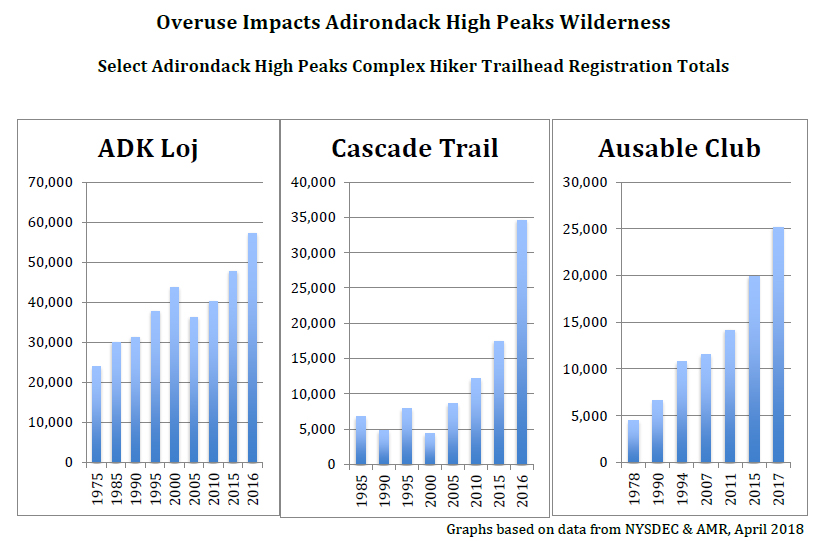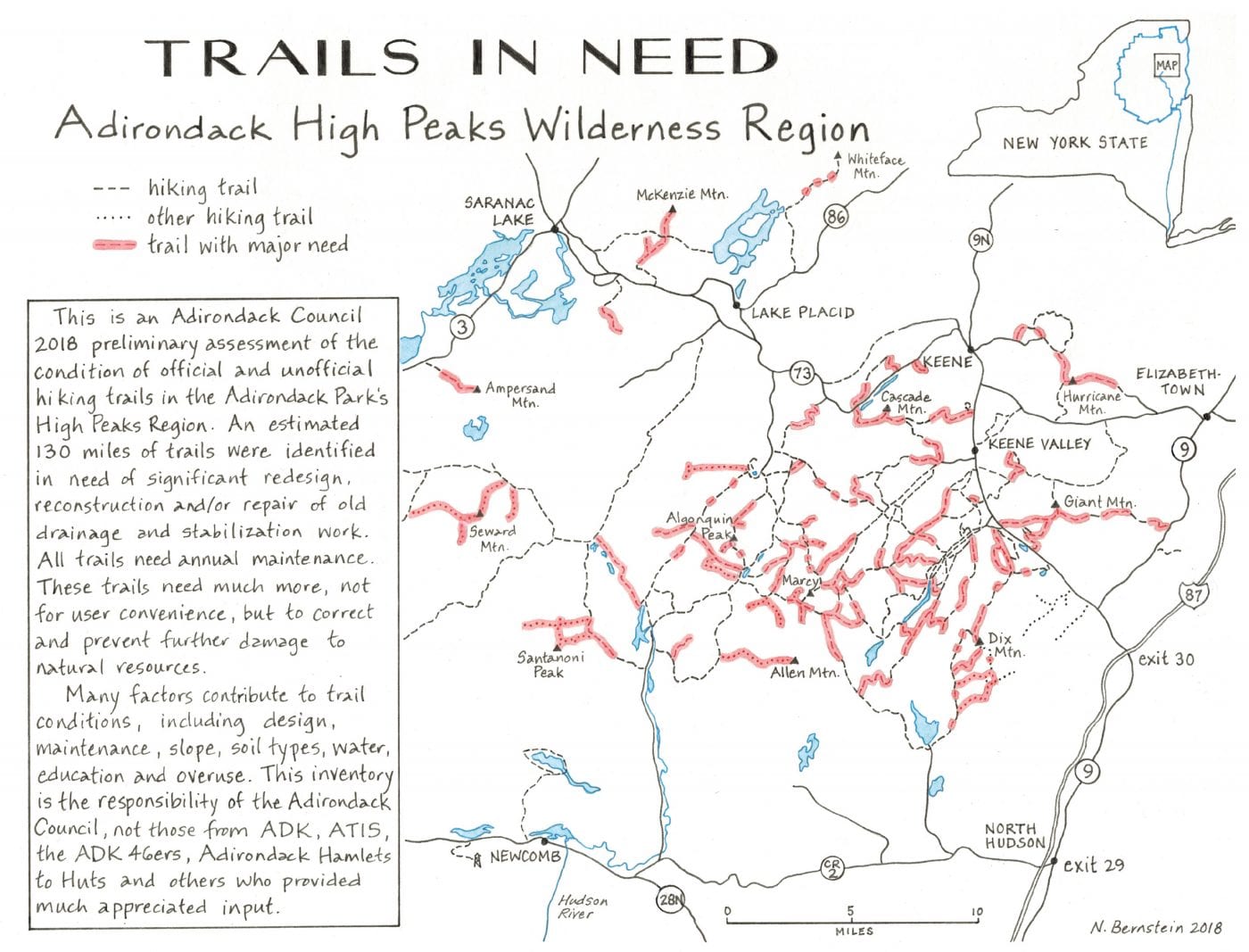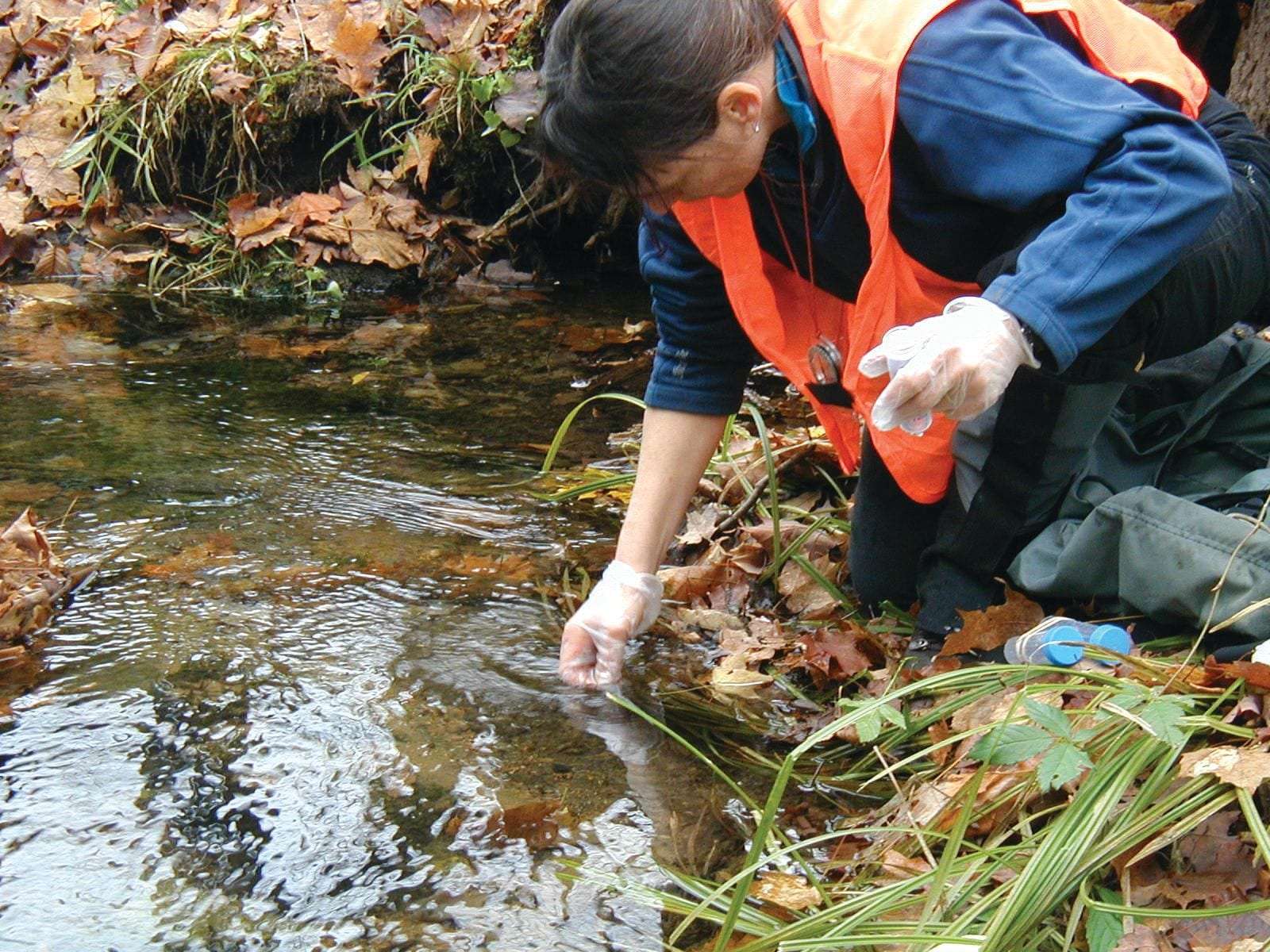The beautiful mountains, freshwater lakes, and large forests call many visitors into the Adirondacks region. Due to the increasing beauty of the Adirondack Park, more and more visitors are coming to visit this breathtaking destination. Yet, the increase in visitors is harming the nature of the Adirondacks. Over the years, it is apparent that the Adirondack Park is being overused. The trail damage, erosion, vegetation damage, and polluted waters are all indicators that the Adirondacks are being overused. For example, there has been a steady increase in the number of visitors in the Adirondacks with an estimate of 12.4 million people visiting in 2017(Adirondack Council). To that note, there was an increase of 500,000 visitors from the previous year in 2016(Adirondack Council). At this rate, there could be a steady increase of visitors within the next 10 years which could cause a whirlwind of issues in the near future. Not only that, roughly 70% of visitors tend to visit the Adirondacks during the peak season (May – October) which causes an excessive amount of people entering the park during a short span of time (Adirondack usa). This causes excessive stress and overuse to the nature within the park.

https://www.adirondackcouncil.org/page/overuse-in-the-adirondack-park-298.html
The most popular activity within the Adirondacks is hiking. Since, hiking is the most common activity amongst this park, it results in a great deal of trail damage and erosion. Many of the trails within the park are unable to withstand the constant large amount of foot traffic each day. The Adirondack Council even noted that there are certain areas of the park that has at least 2.5 feet of soil loss because of the increased foot traffic. This causes for there to be soil erosion on the trails which results in the soil breaking down and effecting nearby water by increasing the turbidity and sediment within the water (Adirondack Council). Obviously, this has further effects harming both the plants and wildlife within the area. For example, there are many species and vegetation within the Adirondacks that have the potential of becoming extinct due to the destruction of their environment. Additionally, trail widening is also occurring within the Adirondack Park. Trail widening happens when hikers venture off trail by stepping on other parts of the vegetation. This causes for the side vegetation to be harmed and result in the trail to widen. Not only that, some parts of the Adirondacks also have trail widening that is so severe that separate trails have emerged. Certain trails within the park have increased by 25 feet over the past 30 years (Adirondack Council). Clearly, this is a very important issue that must be addressed in order to stop the destruction of these beautiful trails.

Not only are the beautiful mountains of the Adirondack Park constantly being overused, so are the lakes. streams, and rivers. The bodies of water within the Adirondacks are home to lots of fishing, water activities, swimming, and camping. However, the increased use of these bodies of water is causing the water to become polluted. For example, the Ausable River Association studied multiple bodies of water in the Adirondacks and tested them for the E-coli bacteria. The study found that there were moderate to high levels of feces and the E-coli bacteria present in these bodies of water (Adirondack Council). This would indicate that the bodies of water are becoming polluted and no longer safe for human drinking.

The overuse of the Adirondack Park is having severe effects on the park. However, there is no easy solution to fix these issues. There are many restoratives, clean-up crews, and protection measures being put in place to lessen the harm of the visitors. Yet still it is a hard challenge to balance the increase of visitors enjoying the beautiful nature and the destruction of the wildlife. One can hope that as our world becomes more environmentally conscious visitors can enjoy the beautiful Adirondack Park while also protecting the nature of this breathtaking park.
Citations:
“Adirondacks Face Crowding and Overuse Issues, Report Finds.” Adirondacks Face Crowding, Overuse Issues, spectrumlocalnews.com/nys/central-ny/ny-state-of-politics/2020/08/25/adirondacks-face-crowding–overuse-issues.
“Adirondacks, Usa.” Adirondacksusa.com.
Council, Adirondack. “Overuse in the Adirondack Park.” Adirondack Council, www.adirondackcouncil.org/page/overuse-in-the-adirondack-park-298.html.
says, Boreas, et al. “Problem Solved?” Adirondack Explorer, 7 Jan. 2021, www.adirondackexplorer.org/stories/new-threats-bring-call-for-fresh-look-at-adirondack-lakes.
says, Donald G. Sloan, and Donald G. Sloan. “Assessment Finds High Peaks Trails Are in Poor Shape.” Adirondack Explorer, 8 Feb. 2021, www.adirondackexplorer.org/stories/high-peaks-trails.
Morgane Orcutt

Morgane, I found your topic on the overuse of the park to be extremely interesting in large part because I have been able to witness it first hand. Your graphs and numbers supporting your claim that the amount of visitors continues to increase were used extremely effectively. I too fear that the park will continue to deteriorate in the coming years due to overuse and worry the only way to prevent it is to turn people away (which is not a long-term viable solution). I also was drawn toward your image of the “trails in need” in the high peaks region. I have had the opportunity to hike each of those trails and can appreciate the current states they are in and the detrimental role that overuse has played in that. I wish there was a better long-term solution set in place for these trails, but the sad truth is that fixing these trails takes a lot of labor power and time, two things currently lacking.